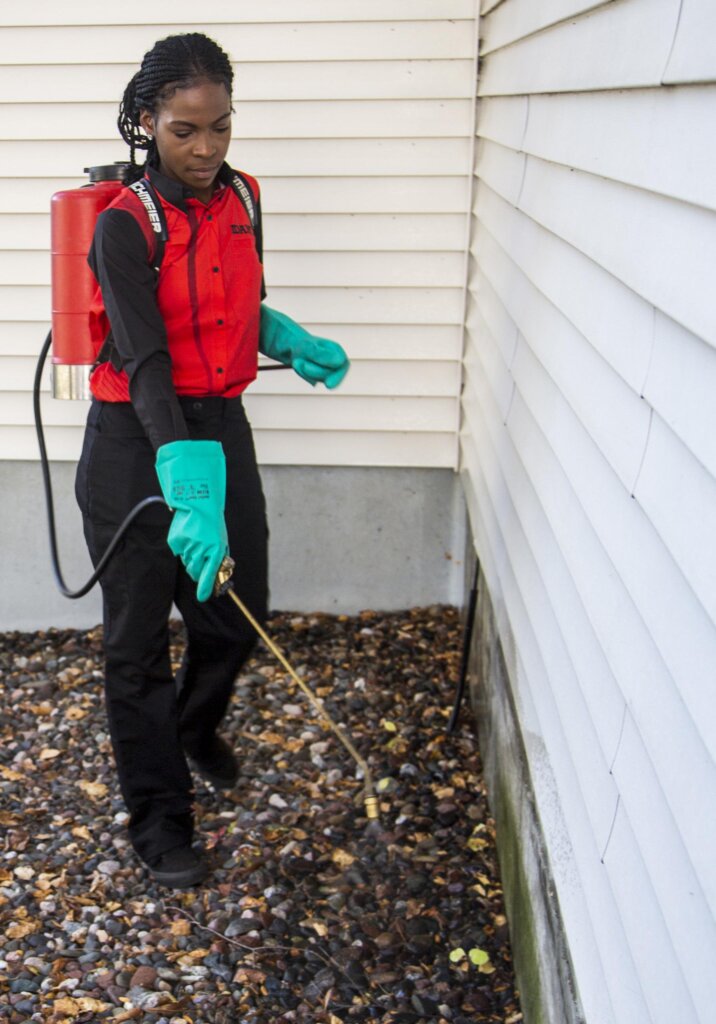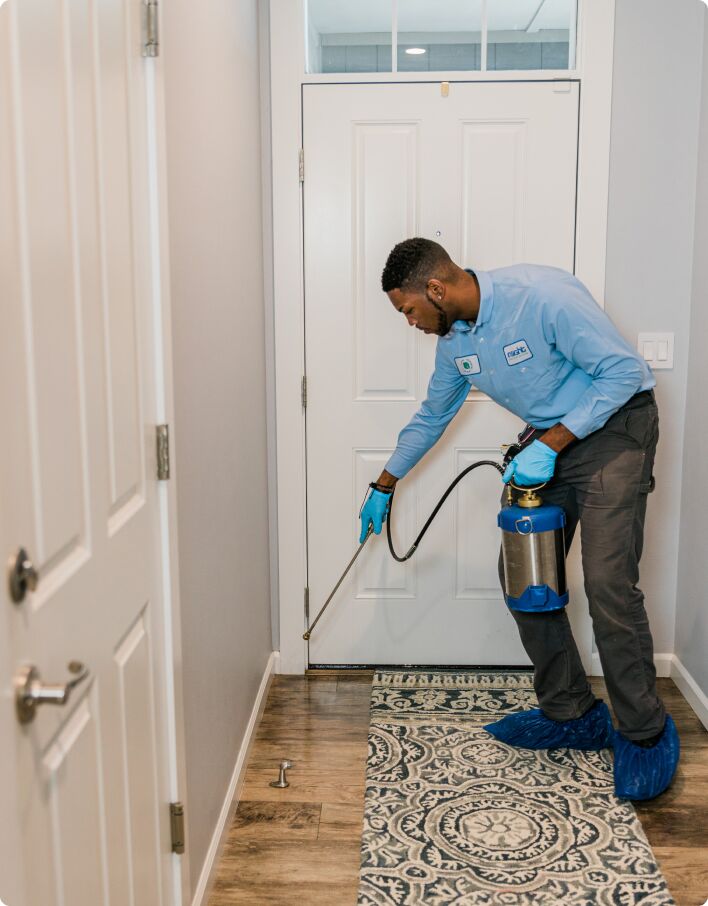Detailed Termite and Bug Solutions with Pest Control Lockhart
Detailed Termite and Bug Solutions with Pest Control Lockhart
Blog Article
Exploring Problem and Treatment Strategies on the planet of Bug Control
The landscape of bug control incorporates a myriad of challenges, especially as problems of common home parasites continue to develop. By incorporating preventative measures with advanced administration strategies, such as Integrated Parasite Management (IPM), property owners can much better secure their settings.

Typical Family Vermin
When it involves managing our living spaces, comprehending typical family parasites is crucial. These insects not only disrupt our comfort however can likewise present wellness threats and damages property. The most prevalent household pests include ants, cockroaches, rats, termites, and bed pests.
Ants, typically seen foraging in kitchens, can contaminate food and develop big colonies. Rats, including mice and rats, can create structural damages and bring diseases like hantavirus and salmonella.
Recognizing the indicators of these insects, such as droppings, nests, or attack marks, is necessary for early treatment (Pest Control Lockhart). Appropriate sanitation techniques, sealing access points, and keeping a clutter-free atmosphere work preventative actions. By determining these typical house parasites and recognizing their behaviors, house owners can take proactive actions to minimize invasions, making sure a healthier living environment
Comprehending Pest Infestations
Parasite infestations can intensify quickly, transforming a small inconvenience right into a significant trouble if not dealt with without delay. Comprehending the nature of these problems is essential for efficient monitoring. Insects can get into household and commercial areas for numerous reasons, consisting of the look for food, shelter, or breeding grounds. Usual factors contributing to invasions consist of inadequate sanitation, structural vulnerabilities, and seasonal adjustments that drive parasites indoors.
Recognizing the sort of pest is essential, as different species exhibit varied behaviors and reproductive rates. For example, rats might develop nests in concealed locations while bugs like cockroaches flourish in moist environments. Early discovery usually pivots on identifying indications such as droppings, nibble marks, or unusual audios, which can show an issue before it becomes extreme.
Ecological conditions also play a vital duty in bug expansion. Warm, moist environments can help with the rapid development of bug populations, while adjustments in landscape design or building can inadvertently develop favorable environments. Normal evaluations and preventative measures are vital to reducing the threat of invasions. An enlightened technique to understanding these characteristics lays the foundation for effective parasite administration techniques in the future.
Therapy Approaches and Techniques
Efficient therapy methods and techniques are necessary for mitigating insect problems and restoring a safe atmosphere. A complex strategy is frequently best, integrating chemical, organic, and mechanical strategies tailored to the particular bug and the extent of the infestation.
Chemical treatments include using insecticides and herbicides, which can successfully remove parasites. Correct application and adherence to safety and security standards are her latest blog crucial to minimize risks to humans and non-target organisms. Integrated Pest Management (IPM) encourages the judicious use of chemicals as a last resource, counting rather on surveillance and limit degrees to figure out intervention demands.
Biological control methods entail introducing natural killers or parasites to reduce parasite populations. This approach is significantly prominent, particularly in farming settings, as it advertises environmental sustainability.
Mechanical methods, such as catches and barriers, give instant relief from bugs without introducing chemicals. Alternatives include sticky catches for bugs or physical obstacles for rodents.
Inevitably, the option of therapy technique should think about the specific parasite, the environment, and possible influence on human wellness and see this site environments. A well balanced combination of these approaches can efficiently take care of infestations while advertising long-term bug control solutions.
Precautionary Measures for House
Proactively addressing bug concerns before they intensify is essential for maintaining a healthy and balanced home setting (Pest Control Lockhart). Executing efficient preventative steps can dramatically reduce the possibility of invasions, inevitably safeguarding both your residential property and health

Appropriate landscaping likewise plays a critical role in prevention. Maintaining hedges and trees cut away from your home lowers the chances of pests locating their means inside. Ensure that drainage systems are operating successfully to stop standing water, which can draw in mosquitoes and various other pests.
Finally, routine evaluations are advisable. Regularly looking for indicators of bug activity permits very early intervention. By adopting these preventative procedures, property owners can create a setting that is much less hospitable to parasites, consequently improving their total lifestyle and decreasing the need for substantial insect control treatments.
Industrial Pest Control Approaches
A detailed approach to business insect control is crucial for services aiming to preserve a safe and sanitary environment. Efficient strategies include a mix of routine examinations, worker training, and the execution of Integrated Insect Monitoring (IPM) practices.
Routine inspections allow very early detection of bug task, enabling prompt treatment. Companies need to develop a regular timetable for these assessments, focusing on risky locations such as kitchens, storeroom, and waste disposal sites. Worker training is just as essential; personnel needs to be educated on the signs of bug problems and the value of reporting them quickly.
Executing IPM methods assists minimize pest issues sustainably. This includes habitat adjustment, such as securing access factors and reducing clutter, as well as utilizing natural deterrents before turning to chemical therapies.

In addition, collaborating with a certified insect control supplier makes certain additional resources accessibility to specialist expertise and innovative therapy alternatives. This collaboration can lead to tailored parasite control intends customized to the particular demands of the business, lessening threats and boosting total efficiency. Inevitably, an aggressive and educated technique promotes a pest-free environment, safeguarding both public health and organization online reputation.
Verdict
In conclusion, efficient pest control requires a comprehensive understanding of typical house insects and their actions, coupled with targeted therapy methods. Carrying out preventative steps along with treatment methods such as Integrated Pest Administration and organic control boosts the ability to alleviate infestations.
Report this page